What is Kids Dentistry?
Kids Dentistry or Pediatric Dentistry is a branch of dentistry which treats the issues of children and youngsters till they reach adolescence. It is not just normal dentistry practiced in any dental clinic in Pune. According to the pediatric dentists in Pune, it is a specialization that involves assisting the soft and tender infants in maintaining good oral health and explaining their parents, its importance.
What's on offer at Sparkle?
Our dentists in Pune specialize in the following popular tooth care procedures :
- Topical Fluoride Application
Topical fluoride applications are especially beneficial for children who are growing up in an area without fluoridated drinking water or without the proper means for good oral care and hygiene. But even for children with access to fluoridated water and oral care, a topical application can still be helpful. A topical fluoride treatment isn’t a stand-alone application, but a regular part of your child’s dental care of daily brushing and flossing and semi-annual dental cleanings and checkups. Topical fluoride enhances the care they already receive to help produce stronger enamel for future healthy teeth.
- Sealants
Sealants are a protective coating put on the grooves of the teeth to help prevent cavities. The grooves on the top of the molars are harder to get clean, and sealants help prevent bacteria building up in the grooves causing decay and the need for a filling.
- Fillings
Fillings are used to save a tooth that has been impacted by a small amount of decay. When a tooth is impacted by decay, the dentist uses his or her drill to remove the bacteria and builds the tooth back up with filling material.
- Crowns
A crown is used to save the natural tooth after it has been impacted by a large amount of decay. A crown, or commonly called a cap, sits on top of the base of the natural tooth and serves as the chewing surface of the tooth. A crown is used to restore in the hopes of not having to pull the tooth. Both white crowns and metal (stainless steel) crowns are available.
- Space Maintainers
Space maintainers are placed in the mouth to hold a place for the permanent teeth below the gum to come in properly and to prevent crowding. It is important to prevent crowding because crowded teeth are harder to clean and care for, which can lead to the need for extensive dental work.
Visit Sparkle, the best dental clinic in Pune, for the oral health of your kids.
Why Sparkle is the Best Dental Clinic in Pune ?
Sparkle Dental Clinic, in association with pediatric dentist in Pune, Dr. Sneha Patil, is set up in such a manner so as to make kids feel at ease about visiting their dentist. We believe that by helping children feel comfortable at the dentist at an early age, we can help alleviate fear of the dentist and dental work. Our pediatric dentists in Pune believe that this is vital to establishing a lifetime of healthy dental habits. At Sparkle dental clinic, our pediatric dentist in Pune also welcomes and treats children with special needs. Dental care is important for everyone, and we will make any accommodations that we can to ensure a child with special needs has a positive experience at the dentist. Sedation options are available for children that have trouble controlling their movements, the friendly environment of the office is engaging, and our private operator rooms allow for a soothing private experience for children that feel overwhelmed. So, schedule an appointment and visit our Dental clinic in Pune with your kid, for all tooth related problems.
Taking care and pride in oral care is something that should start at a young age in an effort to create good habits that last a lifetime. After the teeth have been erupted, it is important to begin brushing and flossing the teeth. Children do not have the dexterity to brush their teeth effectively until about age 7. Until then, it is important as a parent to help them brush their teeth twice a day, for two minutes. Angle the toothbrush towards the gum line and brush in small circular rotations along each surface of the tooth. As your child’s fine motor skills begin to develop, it is natural for them to want to try and brush their teeth on their own. It is important to continue helping them brush to ensure all surface areas have been covered, and then offer to let them try!
This is what our pediatric dentists in Pune recommend to kids and their parents.
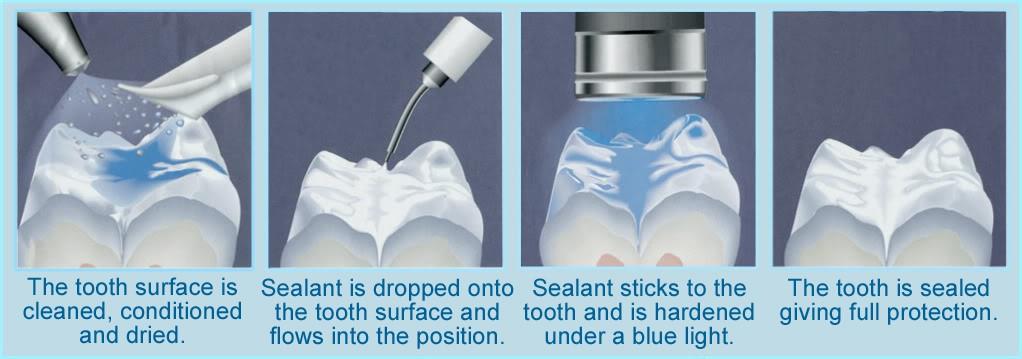
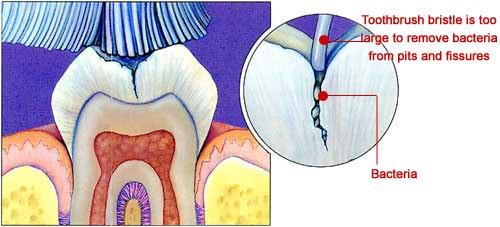
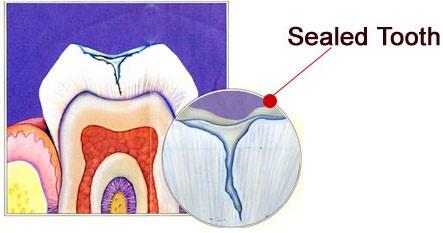

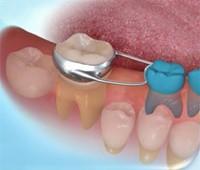
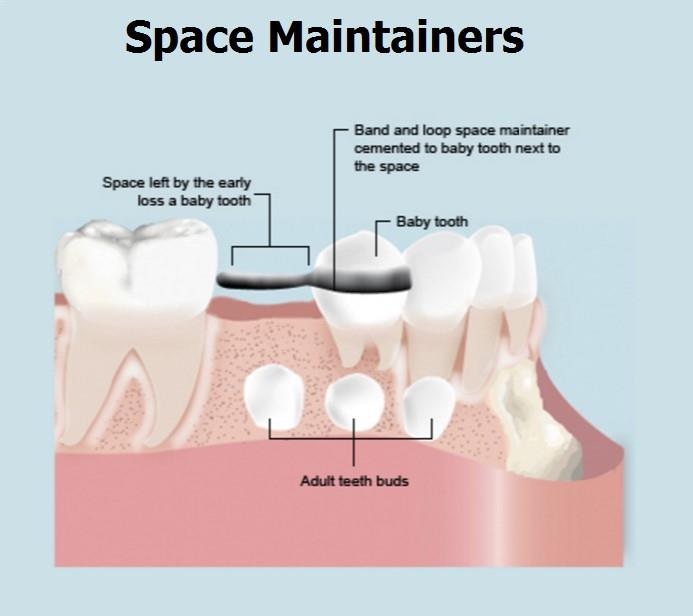
Teeth whitening is used to correct discoloration of the teeth by removing the brown and yellow staining. The term "teeth whitening" can refer to a number of techniques to improve the brightness of the patient's teeth. Among them are chemical whitening, mild acid whitening, abrasive teeth brightening and the newest technique, laser teeth whitening.
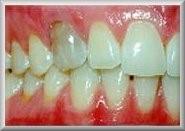
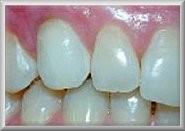
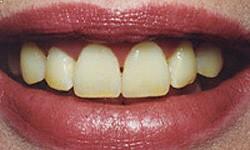
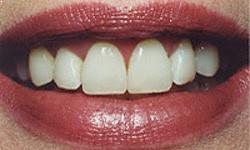
Today we have exciting new biomaterials that can give your smile a lift without invasive treatments.
Ultra-thin porcelain veneers or composite veneers can correct chipped, weakened, or discolored teeth. No more yellow or stained teeth; no more gaps or embarrassing chips. And veneers can return real structural integrity to damaged teeth, while leaving them looking as good (or possibly better) than the originals.
Veneers are custom made to fit over your natural teeth, with a finish more translucent to blend in with surrounding teeth. So people won't notice your tooth, they'll simply see your beautiful, natural smile
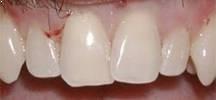 Teeth Before Veneer
Teeth Before Veneer Teeth prepared for veneers
Teeth prepared for veneers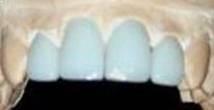 Veneers prepared in laboratory
Veneers prepared in laboratory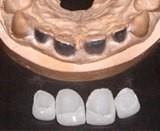 Veneers separated from cast
Veneers separated from cast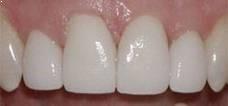 Veneers bonded to tooth surface
Veneers bonded to tooth surfaceCeramic veneer technique is an offshoot of the basic science of cosmetic dental bonding. we have had materials available to us for decades that are capable of creating a tenacious bond with tooth enamel, ceramic veneer technique utilizes the bonding capability of these materials to securely attach a thin shell of porcelain (the porcelain veneer) to a tooth, Although porcelain is inherently brittle, however when it is firmly bonded to a sturdy substructure (a tooth) it becomes very strong and durable.
The biggest advantage of a veneer is that too little tooth material is removed and hence won't weaken the tooth structure. It is also rightly called as "CLONED ENAMEL".
They look and feel completely natural. A beautiful result is achieved in just a few days time, and can last for many years. The texture and finish of porcelain veneers make them highly resistant to external staining. Due to their durability, looks and comfort, veneers have become one of the most popular cosmetic dental treatments available today. Veneers today are widely used by people in the entertainment field and show business to obtain a beautiful smile.
Metal free ceramic crowns are distinguished by thieir excellent aesthetics. Light, is not only reflected, there is also real transparency as seen in natural teeth. This effect makes the metal free ceramic crown perfect for use in anterior areas, where by minor form and alignment corrections are also possible.
A further advantage of metal free ceramic crown is the tooth shaded margin, which need not
To be placed under the gum line. Thus, the crown margin does not irritate the gingival tissue
And prevents gum recession.
It is an extremely biocompatible material with no allergic potential. This can be a real
Advantage to predisposed(allergic) patients.
With smaller defects, limited to the outer surface, we prefer treatment using porcelain facings
(veneers) allowing more of natural tooth to be preserved during preparation.
Progressive development in ceramics brings forth ever stronger materials, such as zirconium
Ceramic. Therefore, it is now possible to fit metal free porcelain crowns in the posterior area
There are various types of all-porcelain or all-ceramic crowns. Let's explain the differences between some of them:
Gum surgery involves the grafting of gum tissue to a part of the mouth where gums are receding, due to periodontal disease, aging, or natural wear of gum tissue. Gum Contouring involves the removal of excess gum tissue, either manually or more commonly with a laser, to improve a "gummy" smile.
If a patient is at risk for tooth loss due to receding gums, Gum Surgery may be performed as a preventive measure. Other indications of needing gum surgery include the appearance of very long teeth and weak gums due to periodontal (gum) disease.
Gum contouring may be required to correct a "gummy" smile. A gummy smile is indicated as teeth that appear to be too short and/or gums that appear to be too prominent. This can occur by either an excess of gum tissue over the teeth (Excessive Gingival Display), or by excessive grinding of the teeth, causing the teeth to become shorter and making the gum tissue appear more prominent.
Gum surgery or gum contouring are often performed in conjunction with other procedures such as composite resin bonding, crowns, and veneers.
The Gum Contouring procedure involves removing excess gum tissue, usually to correct a "gummy" smile, but can also involve the removal of bone. The gum tissue can be removed manually, but is usually done with a diode laser. If a larger amount of tissue needs to be removed, then an additional gum and bone surgery (called Crown Lengthening) may need to be performed. The gum contouring procedure typically takes between 15 to 30 minutes. The Gum Surgery procedure involves the removal of a tissue graft from the roof of the mouth (palate) and suturing the tissue onto the affected gum area. The affected gum area is locally anesthetized and prepared for the graft. For larger treatment areas, general anesthesia or local anesthesia with sedation may be preferred. This newly grafted tissue reinforces thin gums or fills in areas where gums have receded. Typically, a dentist will prescribe an antibacterial mouth rinse to be used twice a day for a 2-week period following surgery
Pros: A change in the smile is noticed immediately after gum surgery. Gum surgery may improve the health of the gums and reduce tooth sensitivity. The procedure will also protect the roots of teeth from decay by lessening further gum shrinkage. Recovery and healing time is usually very short.
Cons: Gum surgery procedures
The color, size, and shape of your teeth all have a profound impact on your appearance.
While it is often the desire of people to improve the look of their smiles, it is the goal of aesthetic dentistry, to do this while still maintaining a "natural" appearance of the teeth. This often requires addressing one or all of the above-mentioned criteria. How is it that alterations in these three characteristics enhance your smile?
Color of Your Teeth
Tooth color is most commonly what people see first. As you get older, your teeth get darker. The reasons for this include normal changes that occur within the tooth and repeated insults from environmental conditions (coffee or tea stains, for example). Generally, then, darker teeth are associated with older age. The easiest way that aesthetic dentistry can correct this is by teeth bleaching. But this alone may not entirely create a natural-looking appearance.
Size and Shape of Your Teeth
Size and shape also are major factors that define the appearance of teeth. The most common cause of changing tooth size and shape over time is tooth wear; and the most common cause of wear is tooth-to-tooth contact, or grinding. Wear on the edges of the teeth can give the appearance of aging because you do not show as much of your teeth when you smile. Another factor that affects how much of your teeth show when you smile is the loss of skin tone as you age. This loss of tone causes your face to sag, thereby showing less of your upper teeth and more of your lower teeth. The aesthetic dentistry treatment to enable more teeth to show when you smile will depend on the cause. If the cause is due to wear of the teeth, dental veneers or dental crowns can be used to regain the lost length and fill out the smile. On the other hand, this may not have a significant effect if the cause is due to the loss of skin tone associated with age. If this is the case, plastic surgery may be indicated as part of the treatment.
Wear on teeth also will make the edges of the front teeth very flat. As this occurs, the edges of the front teeth will form a straight line rather than the more youthful appearance when the two front teeth are slightly longer than the teeth next to them. Also, as they wear, the proportion of length to width will be altered. Teeth will start to appear more square in their shape rather than rectangular.
Basically, any treatment that counteracts the above-mentioned appearance changes has the ability to enhance the appearance of your teeth and smile. The aesthetic dentistry treatment can vary from teeth bleaching to dental crowns or dental veneers. Depending on the severity, other forms of treatment such as braces and gum surgery also may be indicated to enhance the appearance and function of your teeth. It is important to remember that all areas need to be addressed. If treatment for teeth that are worn and dark only involves teeth bleaching, the final result will be whiter teeth that are still worn and short. The teeth will not appear natural, as there will be a conflict between white teeth (youthful) and worn teeth (aged) that do not work together. Instead, it is necessary to correct the color, size, and shape to create a more natural appearance.
Patient had been seen in March 2006 at which time I advised that Britesmile would not change the colour of a tetracycline stained tooth. Veneers were the only option. Patient can remember having yellow bands on the teeth as far back as childhood . Treatment planning was done months in advance using mainly photographs as our guide. Here are the results as completed in November 2006 over a period of 10 days ! In total 16 veneers were done.
Patient reported to the surgery with extremely poor hygiene having not seen a dentist for years. Needless to say he was thrilled with his result !
Patient reported to the surgery with badly worn out teeth due to excessive tooth brushing . Procedure involved doing Porcelain veneers and Composite fillings.
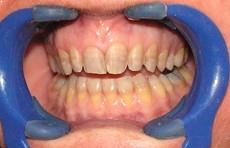
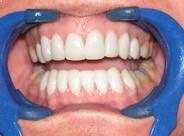
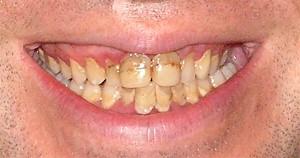
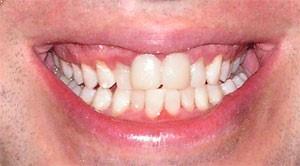

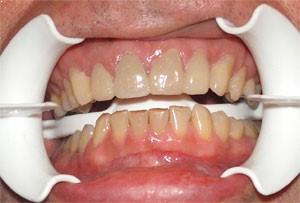
Pros: A change in the smile is noticed immediately after gum surgery. Gum surgery may improve the health of the gums and reduce tooth sensitivity. The procedure will also protect the roots of teeth from decay by lessening further gum shrinkage. Recovery and healing time is usually very short.
Cons: Gum surgery procedures